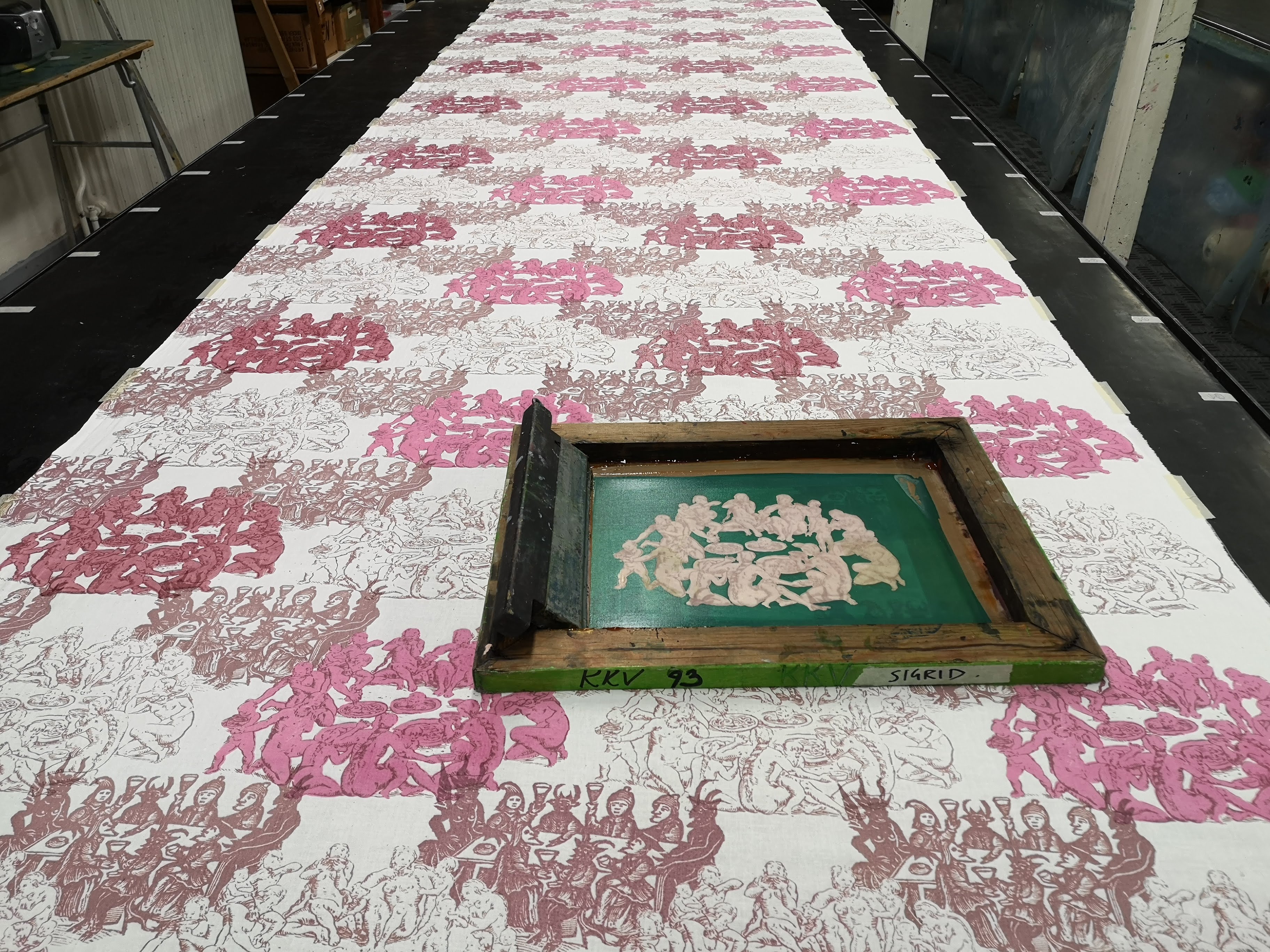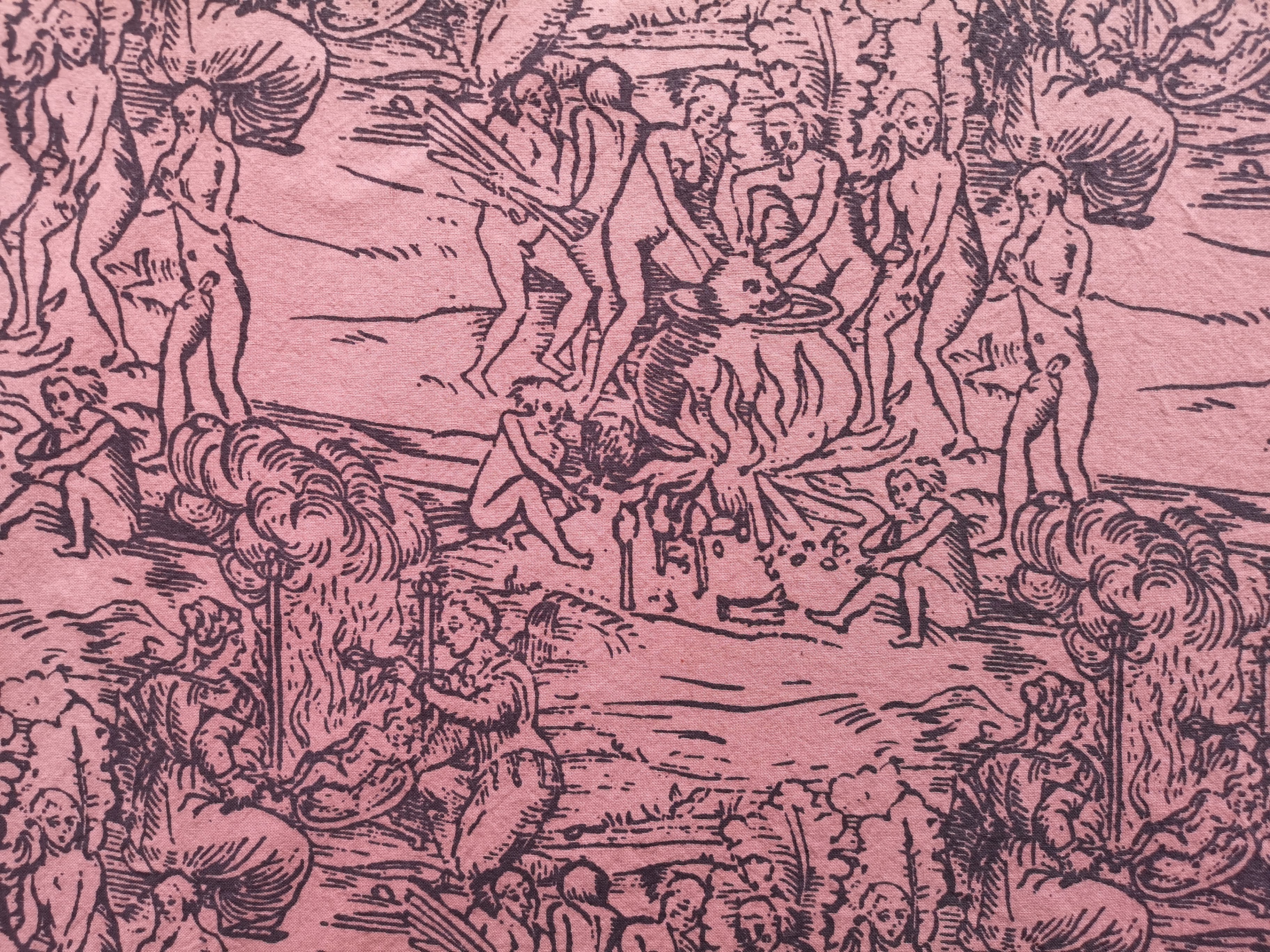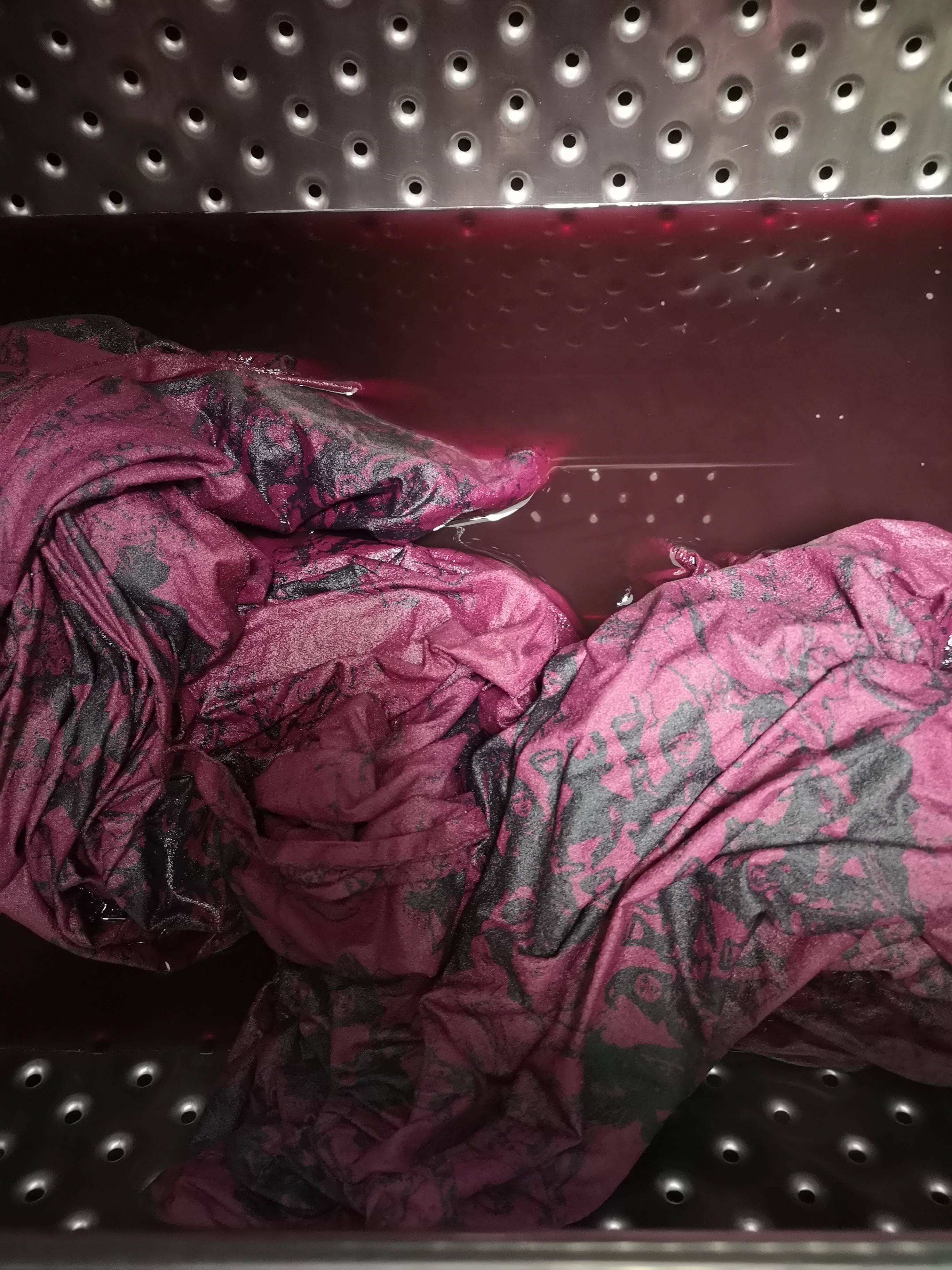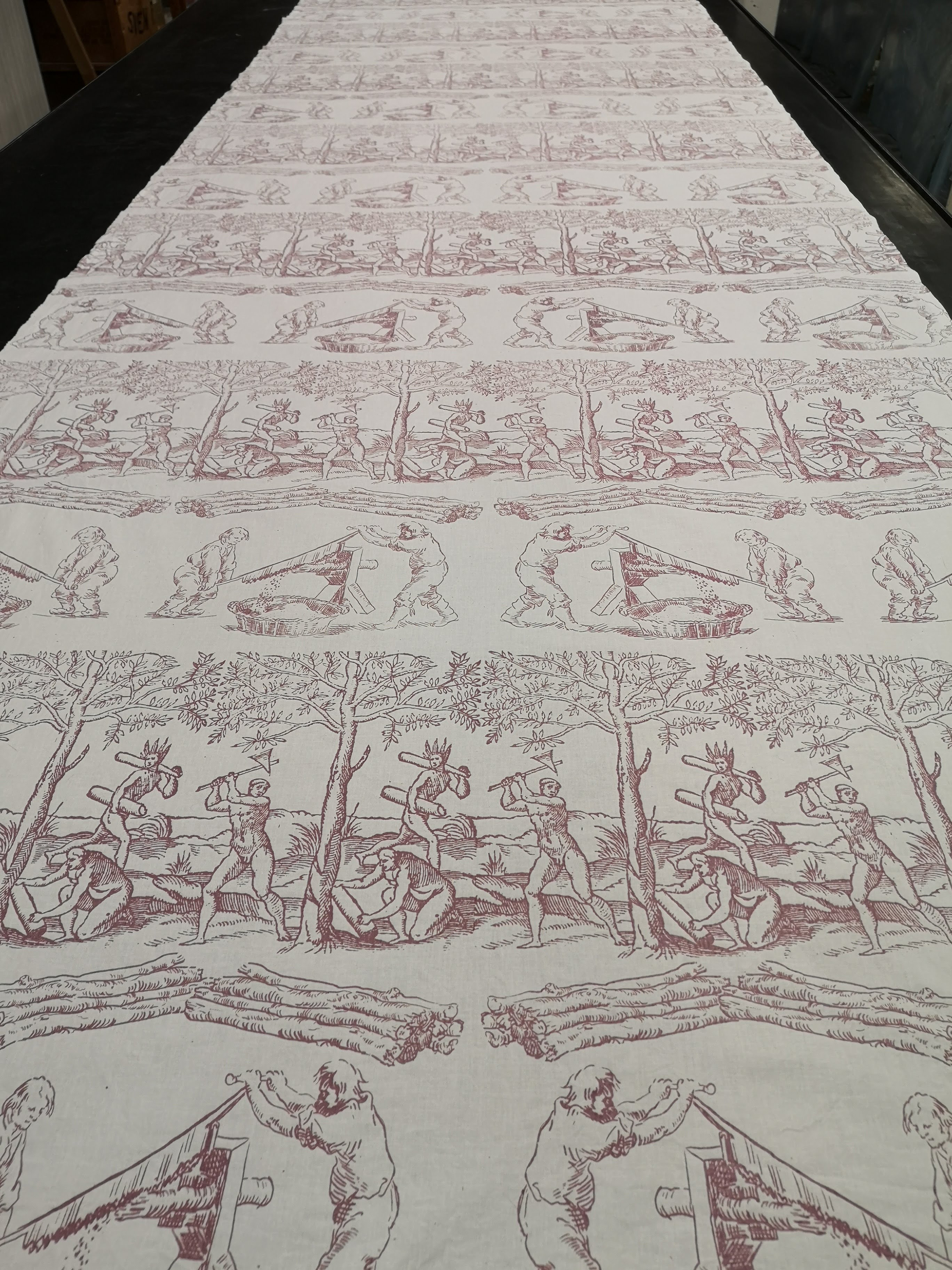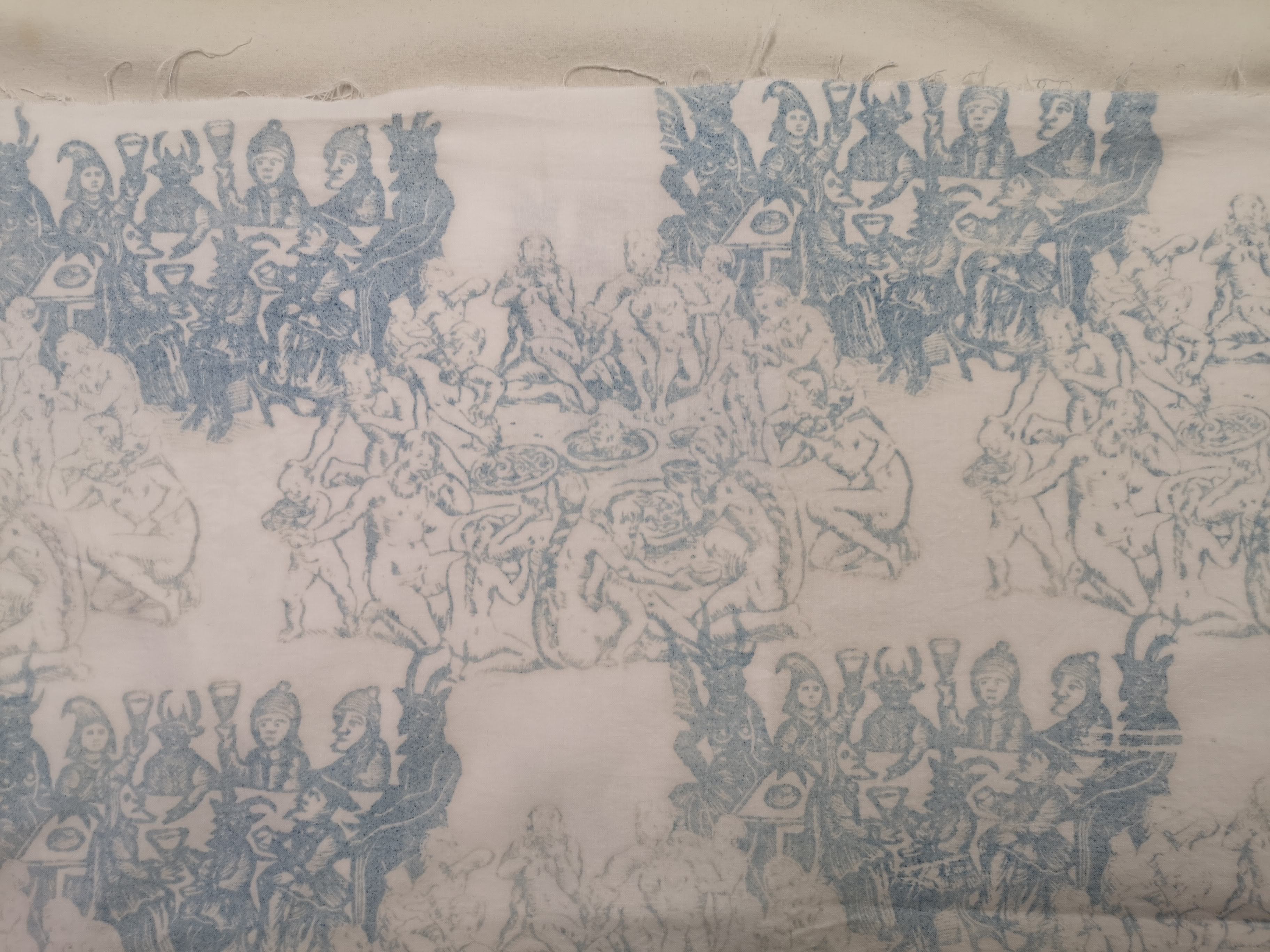Mordant-printing and Dyeing
Printed calicoes or ‘chintzes’ originated in India at least four thousand years ago. Indian craftspeople developed a sophisticated technique of applying mordants and plant dyes, to create beautiful multicoloured patterned cloths. Originally the designs were hand-painted, but later wooden blocks were used. These calicoes arrived to Europe during the end of the 16th century and became immensely popular. By the end of the 17th century printed calicoes had overtaken spices as the main commodity traded by The English East India Trading Company. The threat to the domestic British textile industry was such that the government introduced the Calico Acts of 1700 and 1721 which effectively banned the import of most cotton goods from India (although re-export to other colonies was permitted). Similar prohibitions were introduced in France. Meanwhile, European textile industrialists set about appropriating the Indian techniques, and developing their own calico printing industry which used early industrial techniques such as copper plate printing. Indeed, Foucault writes vividly about the division of labour in the Oberkampf manufactory at Jouy-en-Josas as an example of the disciplining of the workforce in industrial society, in Discipline and Punish (1975).
These printed calicoes, produced in early industrial conditions in Europe, with plant dyes which included colonial commodities, became popular elements of Swedish regional costume. Therefore, despite eventually being appropriated under a national romanticisim, these peasant costumes demonstrated their connection with global colonial forces On the right are examples of printed calicoes used in aprons, neckscarves, and bonnets, from collection of the Nordiska Museum in Stockholm.








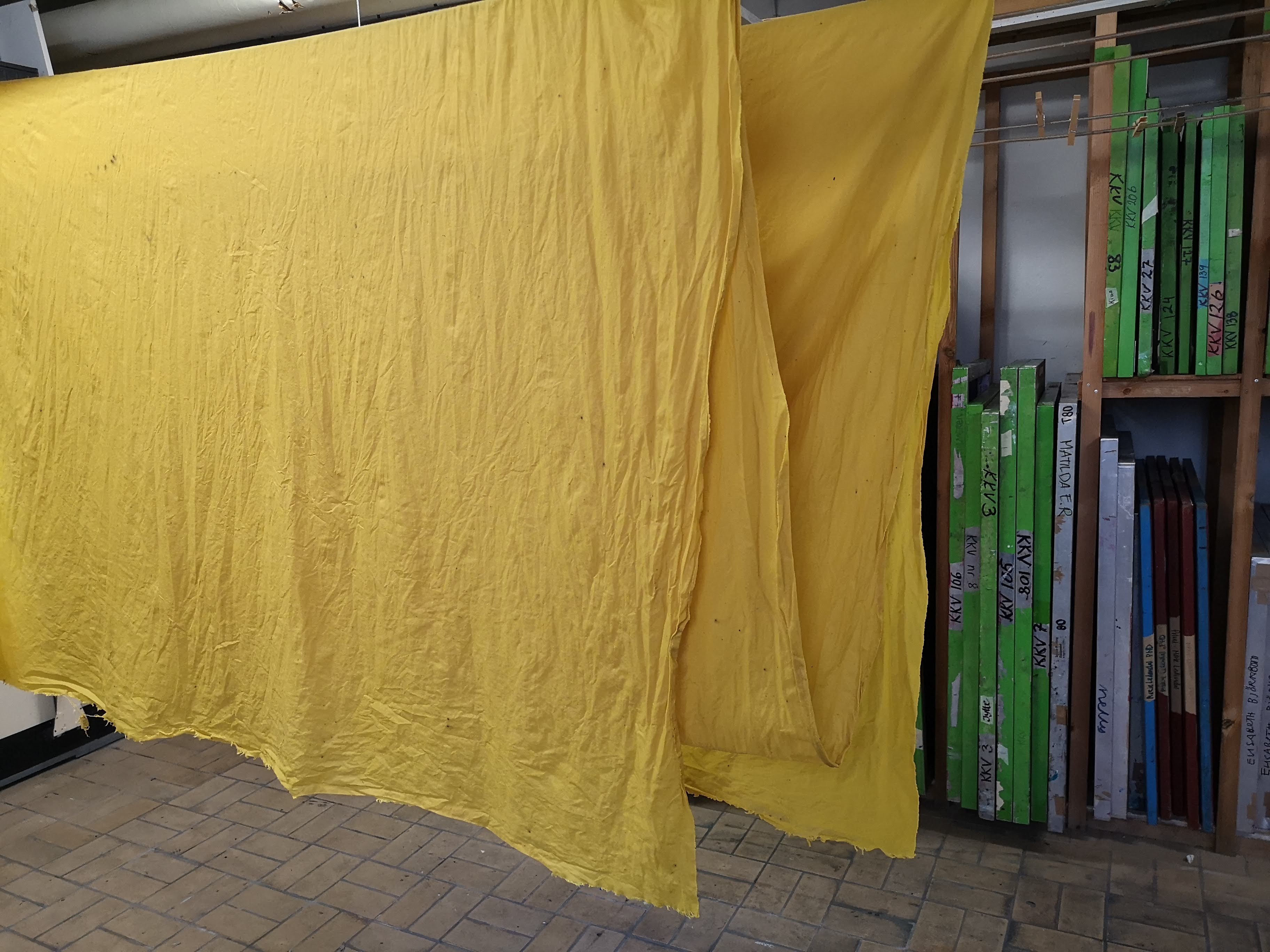

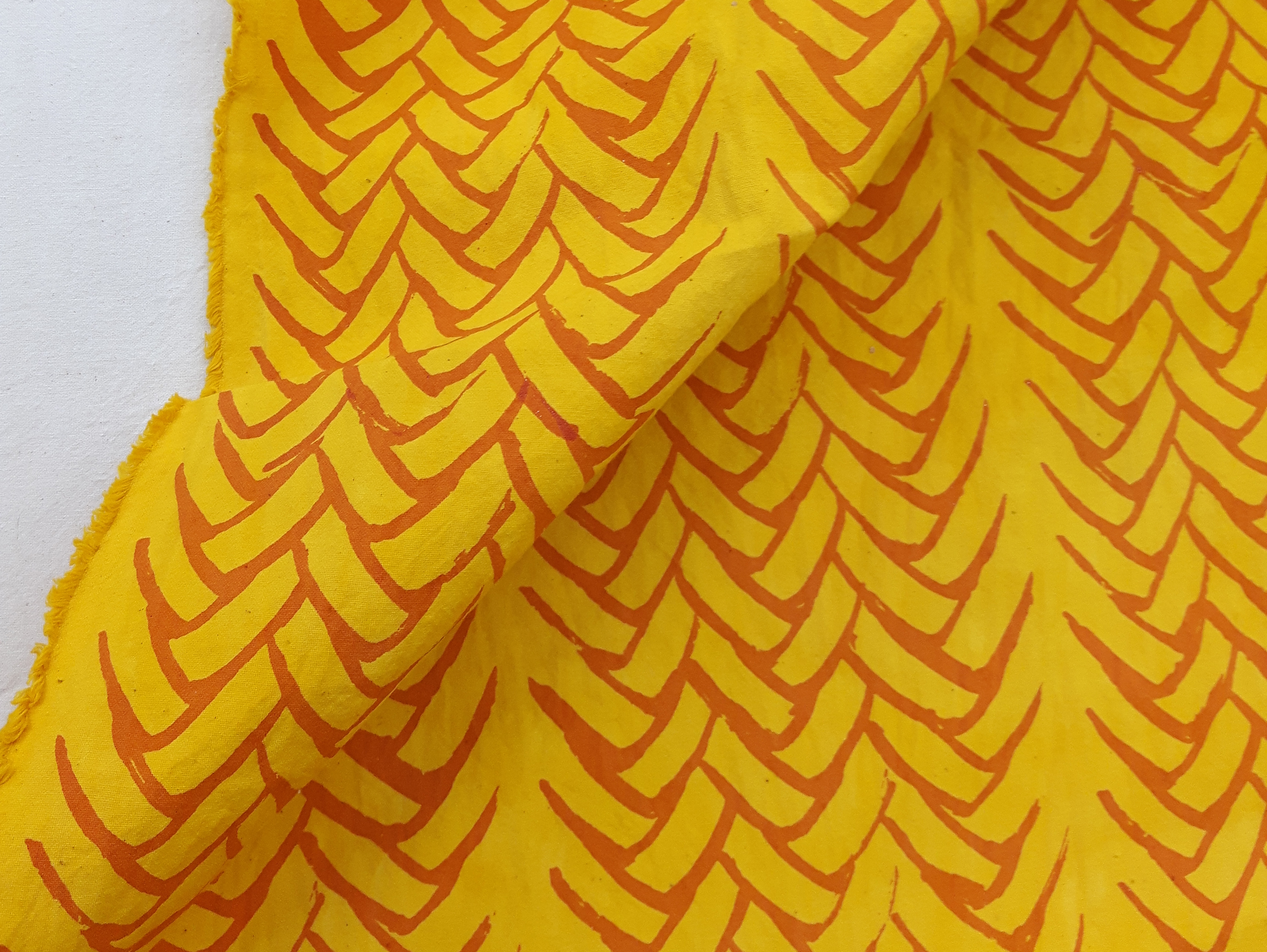


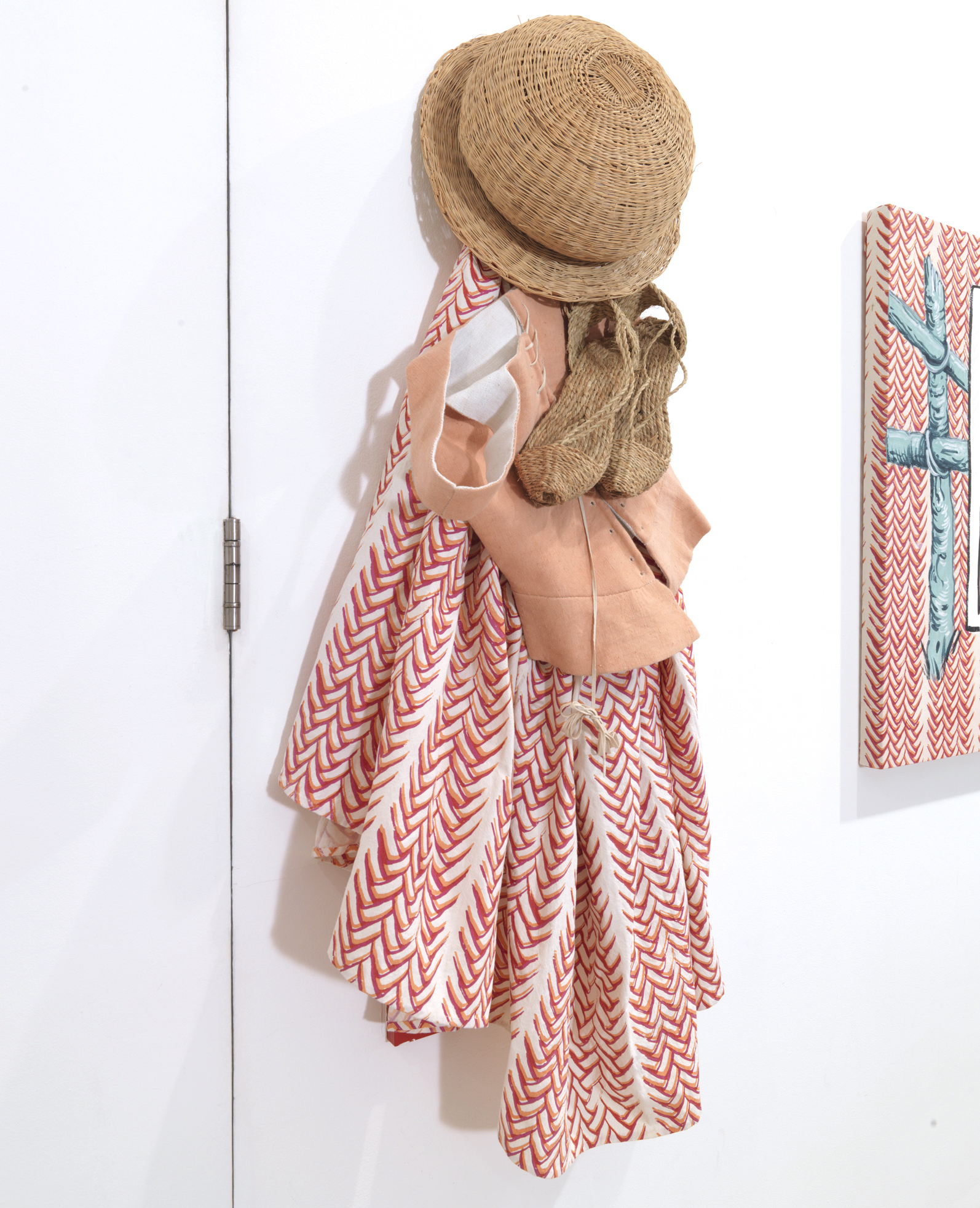

I have developed techniques based on calico painting and woodblock printing for screenprinting, using mordant recipes from the master dyer, Michel Garcia. I use combinations of tannins, aluminium acetate, and ferrous acetate, printing with thickened dye, and immersions in dye baths. Calico printed with dyes are steamed afterwards so that they react with the mordants.
I started using a simple ‘weave’ pattern based on the esparto weaving practiced in Spain. Weaving colours, through the layering of transparent plant pigments with opaque earth pigments is how I think of the practice of painting. The printed calicos were used to make peasant clothes and as a surface to paint on (see the section on paintings).
I started using a simple ‘weave’ pattern based on the esparto weaving practiced in Spain. Weaving colours, through the layering of transparent plant pigments with opaque earth pigments is how I think of the practice of painting. The printed calicos were used to make peasant clothes and as a surface to paint on (see the section on paintings).
The work has developed to into more complex patterns. They tell the story of the inward and outward European coloniality found in brazilwood. The patterns combine cannibals and witches, and the felling and rasping of brazilwood, and are printed and dyed with brazilwood and madder - a popular combination in the dyes of Swedish peasants.
I am also experimenting with printing with indigo, which poses particular technical challenges. I am trying a recipe based on sugar and caustic soda developed by Riikka Raisanen, Anja Primetta, and Kirsi Niinimaki. When printed it looks grey, after steaming it looks brown, but after rinsing it becomes blue.
I am also experimenting with printing with indigo, which poses particular technical challenges. I am trying a recipe based on sugar and caustic soda developed by Riikka Raisanen, Anja Primetta, and Kirsi Niinimaki. When printed it looks grey, after steaming it looks brown, but after rinsing it becomes blue.
